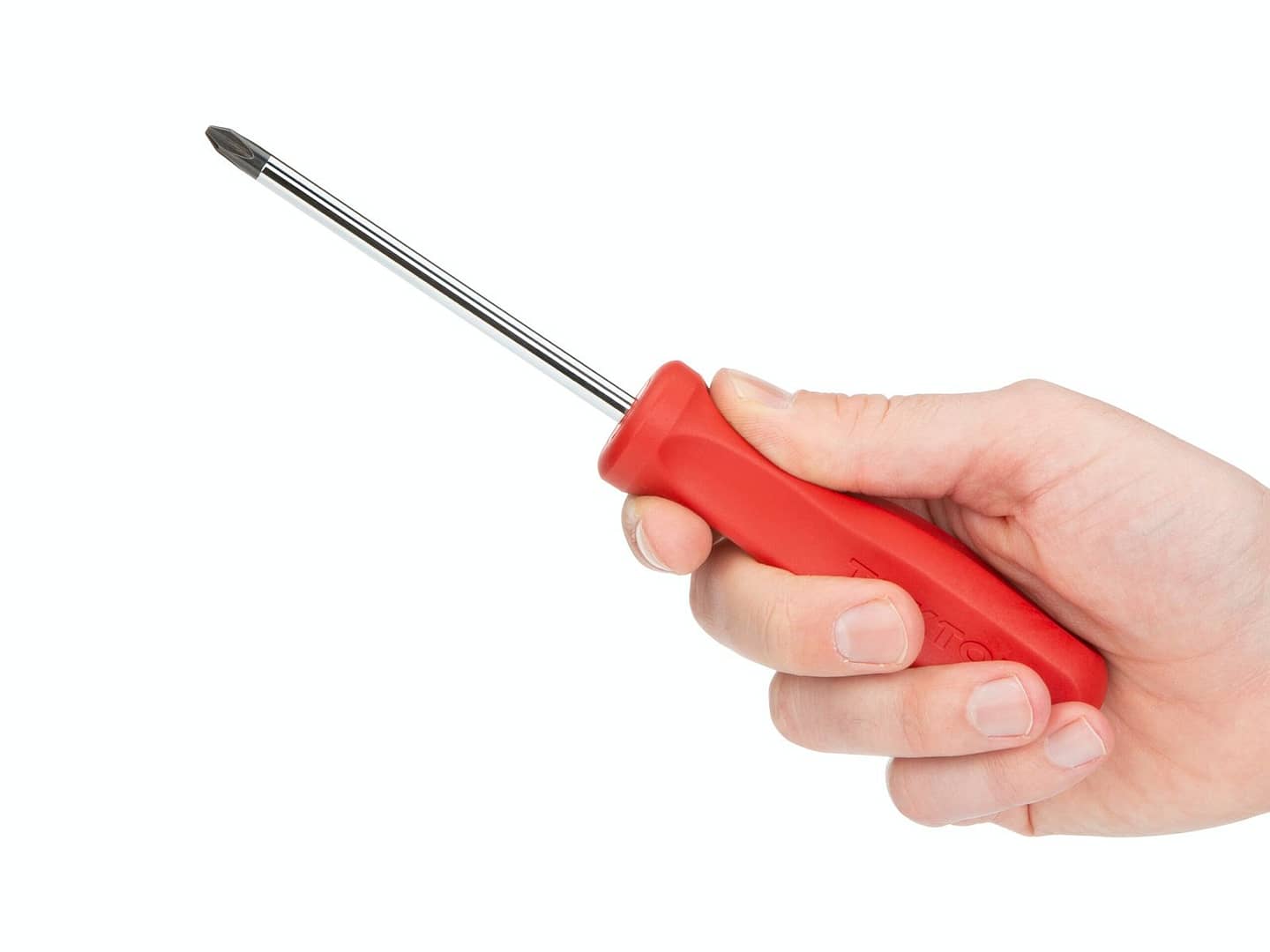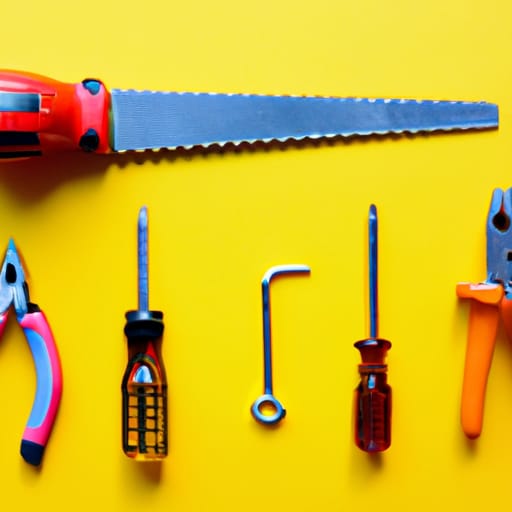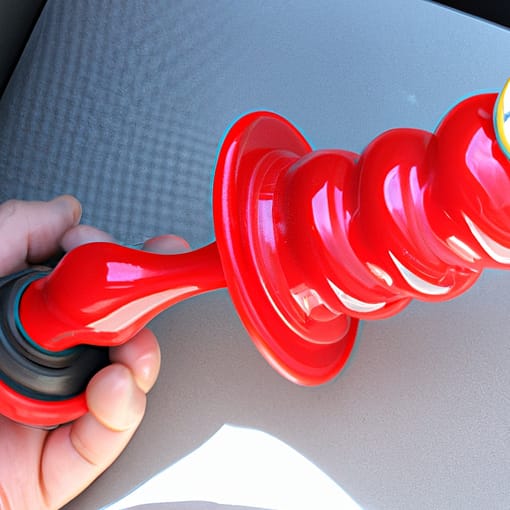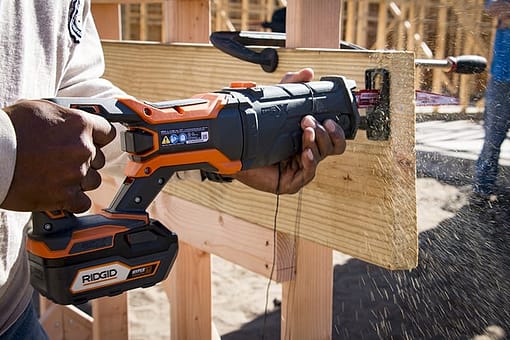You’re ready to tackle DIY projects, but you’re not quite sure where to start. Don’t worry, we’ve got you covered. In this article, we’ll explore the essential tools and materials you need to have on hand for any DIY project. From hammers and screwdrivers to paintbrushes and sandpaper, we’ll give you a comprehensive list of must-have items that will empower you to take on any project that comes your way. So grab your tool belt and get ready to take DIY to the next level!
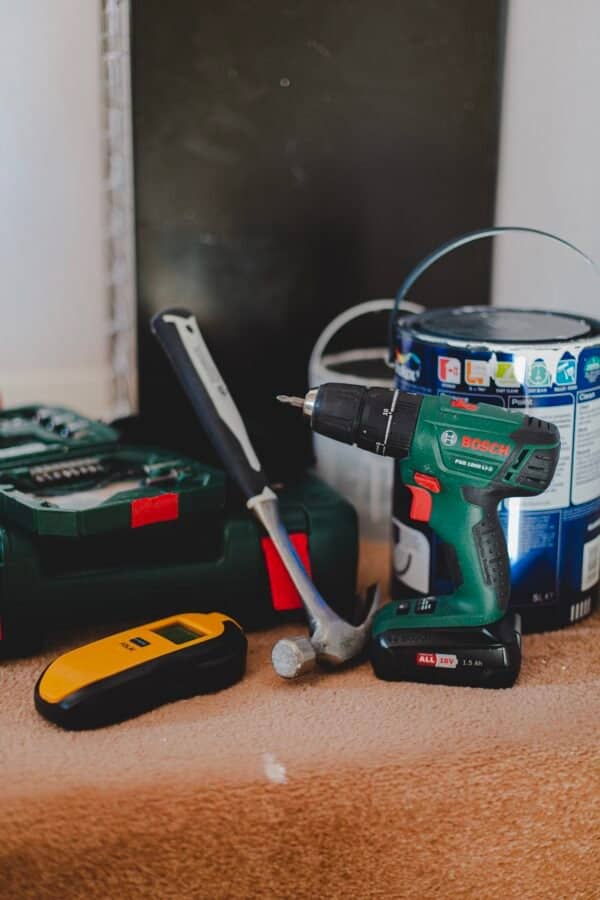
Basic Tools
Screwdriver
A screwdriver is an essential tool that should be in every DIY enthusiast’s toolbox. It is used for driving screws into various materials, such as wood, plastic, or metal. Screwdrivers come in different sizes and types, including flathead and Phillips head. Make sure to have a variety of screwdrivers to tackle different screw types and sizes.
Hammer
A hammer is a versatile tool that can be used for a wide range of DIY tasks, from driving nails to removing them. It is important to have a hammer with a comfortable grip and a sturdy head to ensure efficient and precise work. Different hammer types, such as claw hammers and ball-peen hammers, serve different purposes, so it’s good to have a few options in your toolbox.
Tape measure
Accurate measurements are crucial for any DIY project, and a tape measure is the go-to tool for this task. Whether you’re measuring the dimensions of a room or determining the length of a piece of wood, a reliable tape measure is a must-have. Look for a tape measure with both metric and imperial measurements for added convenience.
Pliers
Pliers are incredibly handy tools that can be used for gripping, bending, and cutting various materials. They come in different types, such as needle-nose pliers for working in tight spaces, and diagonal cutting pliers for cutting wires. Having a set of pliers in your toolbox will make tasks like pulling nails, tightening nuts and bolts, and manipulating wires much easier.
Adjustable wrench
An adjustable wrench, also known as a crescent wrench, is a versatile tool that can be adjusted to fit different nut and bolt sizes. This makes it useful for a variety of DIY projects, ranging from plumbing tasks to furniture assembly. A quality adjustable wrench with a comfortable handle will ensure a secure grip and prevent any slippage.
Utility knife
A utility knife is a handy tool for various DIY tasks, such as cutting materials like carpet, cardboard, and drywall. It can also be used for precise cutting, scraping, and scoring. Make sure to choose a utility knife with a retractable blade for safety, and always keep spare blades on hand for replacements.
Level
Achieving a level surface is crucial for tasks like hanging shelves, installing cabinets, or even just making sure a picture frame is straight. A level is a tool that helps ensure everything is even and straight. Look for a bubble level with both horizontal and vertical vials for maximum accuracy.
Chisel
Chisels are tools that consist of a sharp metal blade attached to a handle. They are commonly used for woodworking tasks, such as carving and shaping wood. Chisels come in different sizes and shapes, so it’s best to have a variety in your toolbox to tackle different projects.
C-clamp
A C-clamp is a versatile tool that can hold objects securely in place during various DIY tasks. It has a unique shape that resembles the letter “C,” with a threaded screw for adjusting the clamping pressure. This tool is especially useful for woodworking, metalworking, and gluing projects.
Hacksaw
A hacksaw is a cutting tool with a fine-toothed blade used for cutting through various materials, such as metal, plastic, and wood. It is ideal for making straight cuts or cutting through small pieces. Ensure you have a hacksaw with a tension adjustment feature for easy blade replacement and proper blade alignment.
Power Tools
Drill
A drill is a power tool that rotates a cutting tool, typically a drill bit, to create holes in different materials, such as wood, metal, or concrete. It is a fundamental tool for various DIY projects, including woodworking, home improvement, and general repairs. Consider investing in a cordless drill for added mobility and convenience.
Circular saw
A circular saw is a versatile power tool that uses a toothed disc or blade to make straight cuts in various materials, including wood, metal, and plastic. It is commonly used for cutting large sheets of material or making rip cuts. When choosing a circular saw, look for features such as adjustable depth and bevel settings for increased versatility.
Jigsaw
A jigsaw is a power tool that features a reciprocating blade used for cutting intricate or curved shapes in different materials, such as wood, plastic, or metal. It is ideal for tasks like cutting out patterns, making curved cuts, or creating intricate designs. Look for a jigsaw with variable speed settings and a tilting base for maximum control and flexibility.
Power sander
A power sander is a tool used to smooth surfaces by abrasive action. It comes in different types, including orbital sanders, belt sanders, and palm sanders. A power sander speeds up the sanding process and ensures a consistent finish. Consider the size and weight of the sander, as well as the type of sandpaper it requires, when choosing one for your toolbox.
Router
A router is a versatile power tool used for hollowing out or shaping areas of wood, plastic, or other materials. It is particularly useful for creating decorative edges, cutting grooves, and joining pieces of wood. Look for a router with adjustable depth settings and various bits for different cutting options.
Nail gun
A nail gun, also known as a pneumatic nailer, is a power tool that uses compressed air to drive nails into various materials, such as wood or metal. It is an essential tool for tasks that require fast and efficient nailing, such as framing, trim work, and upholstery. Always prioritize safety when using a nail gun and wear appropriate eye and ear protection.
Angle grinder
An angle grinder is a versatile power tool that uses a spinning disc or wheel to cut, grind, or polish different materials, including metal, stone, or concrete. It is commonly used for tasks such as removing rust, grinding down metal welds, or cutting through tiles. Ensure you have the necessary safety gear, such as goggles and gloves, when using an angle grinder.
Power drill
A power drill, or electric drill, is a versatile tool that combines rotation and forward force to create holes in various materials. It is a must-have tool for DIY projects that involve drilling holes or driving screws quickly and efficiently. Consider investing in a drill with variable speed settings and multiple torque settings for increased versatility.
Reciprocating saw
A reciprocating saw, also known as a sabre saw or sawzall, is a power tool with a straight blade that moves back and forth rapidly, allowing it to cut through different materials, including wood, metal, or plastic. It is useful for demolition work, cutting through pipes, or making rough cuts. Look for a reciprocating saw with variable speed settings and easy blade changing mechanism.
Belt sander
A belt sander is a power tool that uses a continuous loop of sandpaper mounted on a moving belt to smooth surfaces and remove material quickly. It is ideal for larger surface areas and heavy-duty sanding tasks. Consider the size and power of the belt sander, as well as the availability of different grit sandpaper, when choosing one for your DIY projects.
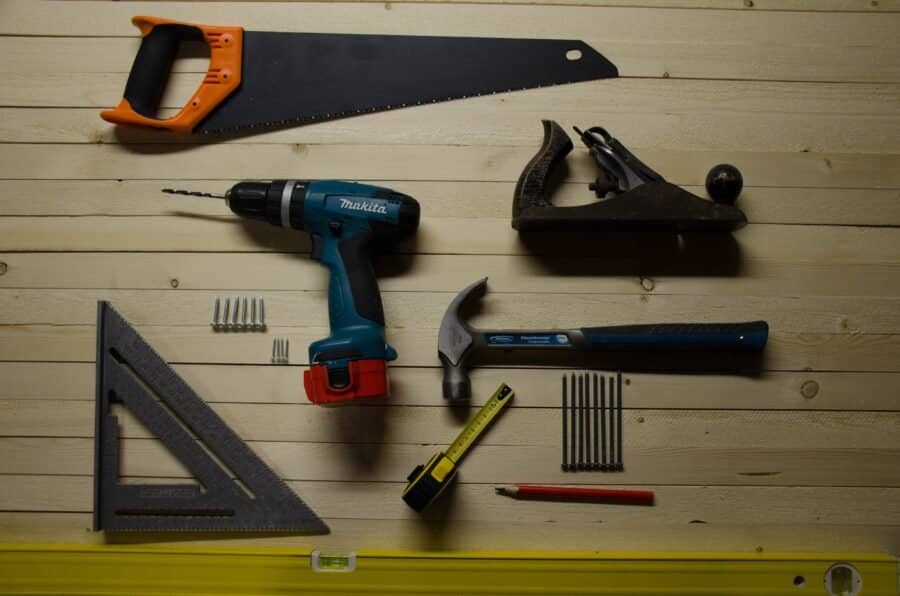
Safety Equipment
Safety glasses
Protecting your eyes should be a top priority when engaging in DIY projects. Safety glasses provide essential eye protection from flying debris, dust, and other hazards that can cause injury. Choose safety glasses that provide a comfortable fit and meet the relevant safety standards.
Ear protection
Many DIY tasks involve loud noises that can damage your hearing over time. Ear protection, such as earmuffs or earplugs, is essential to safeguard your hearing. Invest in high-quality ear protection that offers appropriate noise reduction and a comfortable fit.
Dust mask
Dust and airborne particles can be harmful to your respiratory system, especially when working with materials like wood, drywall, or paint. A dust mask or respirator mask helps filter out these particles, reducing the risk of respiratory problems. Look for masks with N95 or N100 ratings for maximum protection.
Gloves
Gloves are an essential safety item for protecting your hands from cuts, abrasions, and chemicals while working on DIY projects. Choose gloves made from durable and resistant materials, such as leather or nitrile, that offer a good grip and dexterity.
Protective clothing
Wearing appropriate clothing can minimize the risk of injuries during DIY projects. Avoid loose-fitting garments that may get caught in machinery, and opt for sturdy work boots to protect your feet. Additionally, consider wearing long sleeves and pants to protect your skin from cuts, scratches, or chemical splashes.
Respirator mask
A respirator mask is a more advanced form of dust mask, providing a higher level of protection against airborne particles and chemicals. It is especially important to use a respirator mask when working with hazardous materials, such as paints, solvents, or certain construction materials. Look for respirators with appropriate filters for the specific tasks you’ll be undertaking.
Hard hat
When working on construction or renovation projects that involve working at height or in areas where falling objects are a risk, wearing a hard hat is essential. A hard hat protects your head from potential head injuries and should be worn in accordance with safety regulations.
Knee pads
Knee pads are crucial for tasks that require kneeling or working at low levels, such as flooring installation or gardening. They provide cushioning and support to protect your knees from strain or injury. Look for knee pads that are comfortable, adjustable, and offer sufficient padding.
Fire extinguisher
Having a fire extinguisher on hand is an essential safety precaution for any DIY project. Accidents can happen, and having the ability to extinguish small fires quickly can prevent them from spreading. Make sure the fire extinguisher is accessible, properly maintained, and easily identifiable in your workshop or home.
First aid kit
A well-stocked first aid kit is a must-have for any DIY enthusiast. It should contain basic medical supplies, such as bandages, antiseptic wipes, adhesive tape, and pain relievers. Having a first aid kit readily available ensures that you can address minor injuries or accidents promptly.
